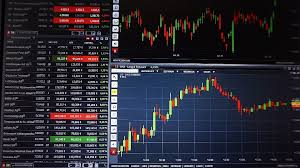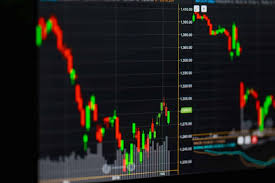
Mastering the Art of Gold Trading in Forex Markets
Gold trading in the Forex market has been a popular investment choice for many traders due to its stability and intrinsic value, especially during times of economic uncertainty. As a trader, whether novice or seasoned, understanding the nuances of gold trading can significantly boost your profits and minimize risks. In this guide, we will explore effective trading strategies, provide insights into market trends, and highlight key factors influencing gold prices. For those looking to start trading, consider checking out trading gold forex Platform Forex for a reliable trading platform.
Understanding the Basics of Gold Trading in Forex
Gold is commonly traded in the Forex market through the XAU/USD currency pair. XAU represents one troy ounce of gold, while USD refers to the U.S. dollar. The price of gold is influenced by various factors, including economic indicators, geopolitical events, market sentiment, and consumer demand. As a trader, it’s essential to keep an eye on these factors to make informed trading decisions.
Key Factors Influencing Gold Prices
1. Economic Indicators
Economic indicators play a significant role in determining the price of gold. Key reports such as employment figures, inflation rates, and GDP growth influence market expectations. For instance, high inflation typically leads to an increase in gold prices as investors seek a hedge against currency devaluation.
2. Central Bank Policies
Central banks hold large reserves of gold and their policies can significantly impact its price. Lower interest rates tend to weaken the dollar, making gold cheaper for foreign investors and subsequently driving up its price. Conversely, when rates rise, gold may become less attractive, leading to price declines.
3. Geopolitical Events

Geopolitical tensions and economic instability are critical factors that push traders towards gold as a safe-haven asset. Events such as war, economic sanctions, or political instability usually lead to increased gold demand, resulting in price surges.
4. Market Sentiment
Traders’ psychological factors and market sentiment can also affect gold prices. When fear and uncertainty rise, gold often reacts positively. Monitoring market sentiment indicators can provide valuable insights into potential price movements.
Trading Strategies for Gold in Forex
1. Trend Following
One effective strategy for trading gold is trend following. This involves analyzing historical price movements and recognizing patterns to predict future price behavior. Traders can use technical indicators, such as moving averages and trend lines, to identify upward or downward trends and make informed trading decisions.
2. Breakout Trading
Breakout trading is another popular strategy. This involves waiting for the gold price to break through key support or resistance levels before entering a trade. This strategy can yield significant profits if executed correctly, as breakouts often lead to strong price movements.
3. Using Fundamental Analysis
Fundamental analysis involves assessing the economic factors affecting gold prices. By staying informed about global economic news and data, traders can make educated guesses about future price movements and align their strategies accordingly.
4. Employing Risk Management Techniques
Effective risk management is crucial in trading gold. Setting stop-loss and take-profit orders can help minimize losses and secure profits when trading. Additionally, traders should consider using a risk-to-reward ratio that suits their trading style to enhance their overall trading performance.

Technical Analysis Tools for Gold Trading
Technical analysis is essential for traders looking to make profitable trades in the gold market. Various tools can provide insights into price movements, helping traders assess market trends and identify entry and exit points.
1. Candlestick Charts
Candlestick charts are a fundamental tool in technical analysis. They provide a visual representation of price movements over a specified time frame, helping traders identify potential reversals or continuation patterns.
2. Relative Strength Index (RSI)
The RSI is a momentum oscillator that measures the speed and change of price movements. It ranges from 0 to 100 and helps traders identify overbought or oversold conditions in the market.
3. Moving Averages
Moving averages are commonly used to smooth price data and identify trends. The simple moving average (SMA) and the exponential moving average (EMA) are popular choices among traders for determining trend direction.
The Importance of a Trading Plan
Having a well-defined trading plan is essential for success in gold trading. A trading plan helps establish clear objectives, defines entry and exit points, and incorporates risk management strategies. Sticking to your trading plan can prevent emotional decision-making and enhance your chances of long-term success.
Conclusion
In conclusion, trading gold in the Forex market can be a lucrative endeavor when approached with the right knowledge and strategies. By understanding the factors influencing gold prices, implementing effective trading strategies, utilizing technical analysis, and adhering to a solid trading plan, traders can enhance their success in this market. As always, continuous education and practice are vital in mastering the art of trading gold. Whether you are a novice or an experienced trader, embracing a disciplined approach can lead you to achieve your trading goals.
